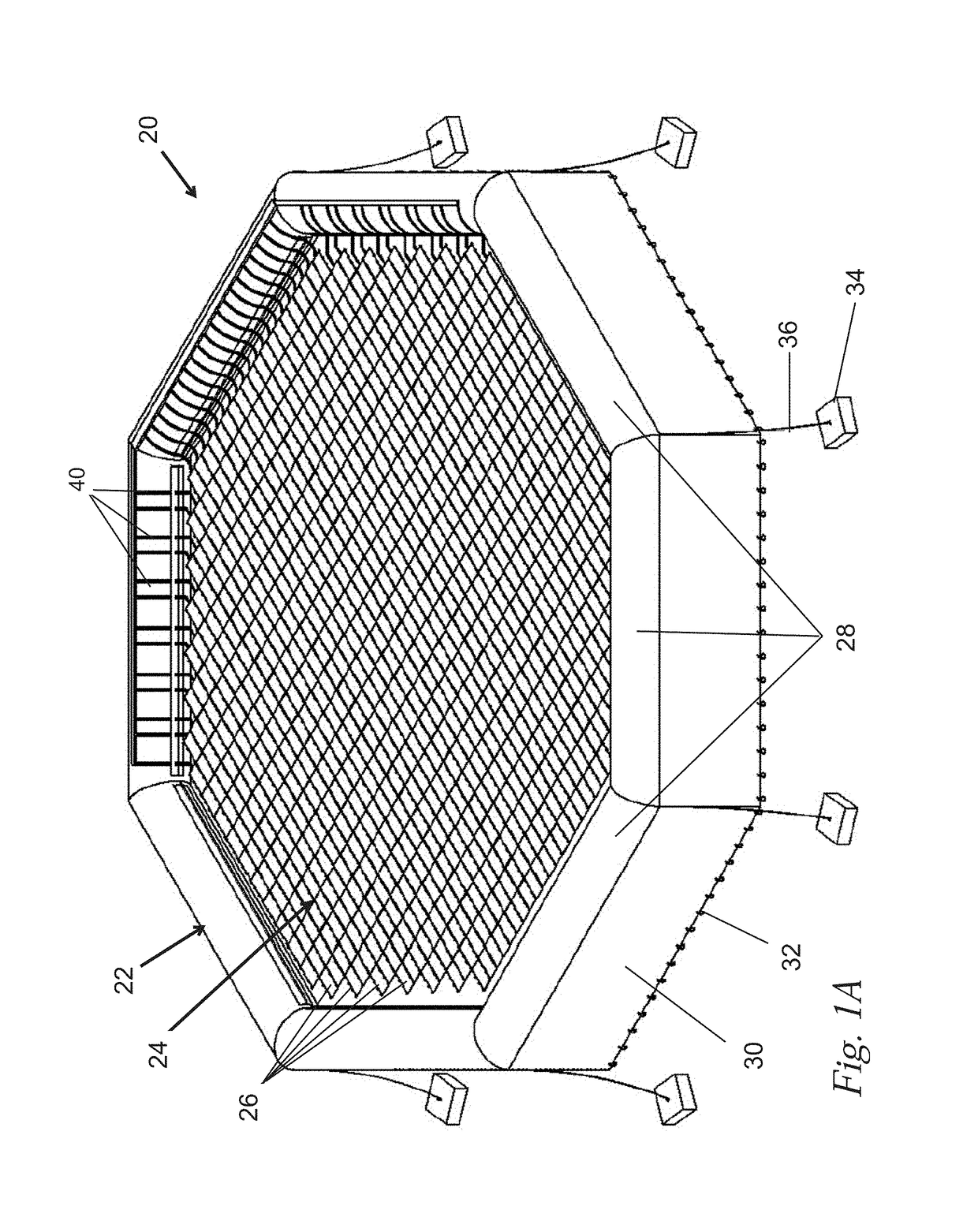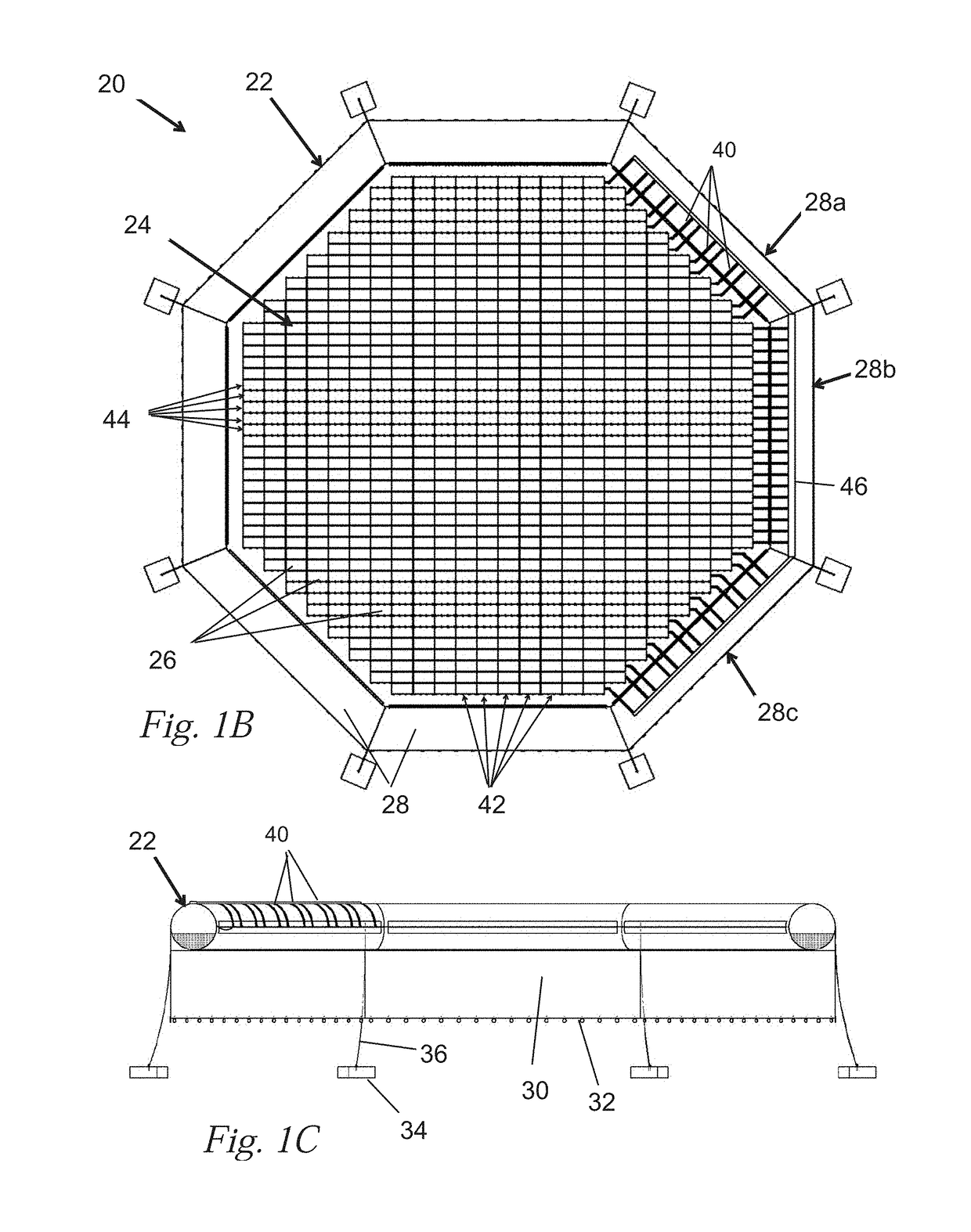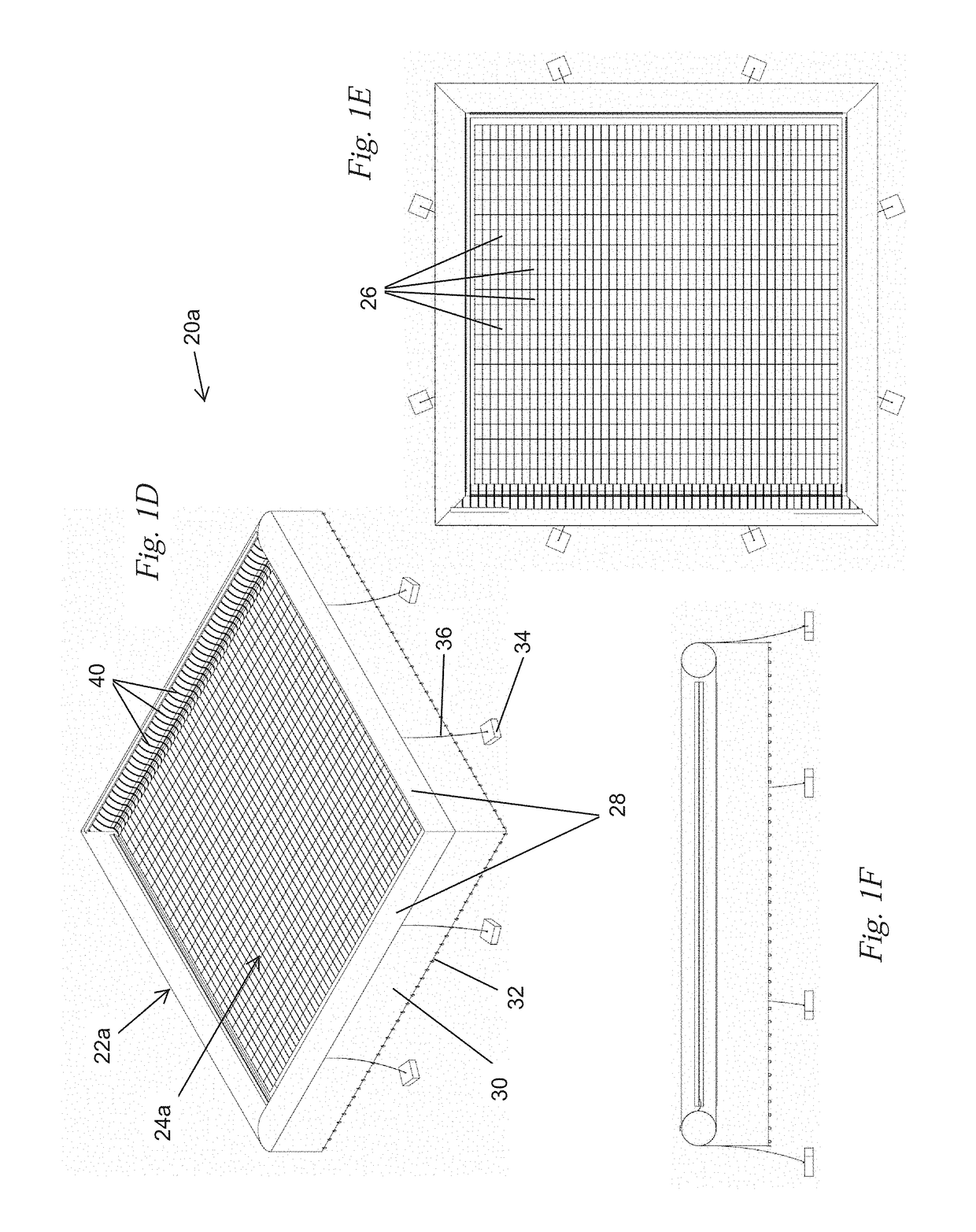Floating solar panel systems
a solar panel and solar panel technology, applied in the field of photovoltaic systems, can solve the problems of negative environmental impact and huge land area, and achieve the effects of reducing wave motion, reducing wave motion inside the buoy, and reducing wave motion
- Summary
- Abstract
- Description
- Claims
- Application Information
AI Technical Summary
Benefits of technology
Problems solved by technology
Method used
Image
Examples
Embodiment Construction
[0035]The present application discloses a number of floating solar units or systems each having a peripheral buoyant pontoon within which is suspended an array of individual photovoltaic panels. A stabilizing skirt drops down into the water underneath the pontoon and creates a more placid “moon pool” within the pontoon to reduce turbulence from wave action and therefore enhance the efficiency of the array of photovoltaic panels. A plurality of the floating solar systems may be aggregated to form an island of units. It should be understood that the various aspects of the floating solar systems may be interchanged and combined in many ways, and that none are excluded. The scope of the invention being defined only by the appended claims.
[0036]The floating solar systems may be deployed in any body of water large enough to receive them. The size of the units may vary from relatively small (10 meters wide) to quite large. An exemplary floating solar system has an outer diameter of about 4...
PUM
 Login to View More
Login to View More Abstract
Description
Claims
Application Information
 Login to View More
Login to View More - R&D
- Intellectual Property
- Life Sciences
- Materials
- Tech Scout
- Unparalleled Data Quality
- Higher Quality Content
- 60% Fewer Hallucinations
Browse by: Latest US Patents, China's latest patents, Technical Efficacy Thesaurus, Application Domain, Technology Topic, Popular Technical Reports.
© 2025 PatSnap. All rights reserved.Legal|Privacy policy|Modern Slavery Act Transparency Statement|Sitemap|About US| Contact US: help@patsnap.com



